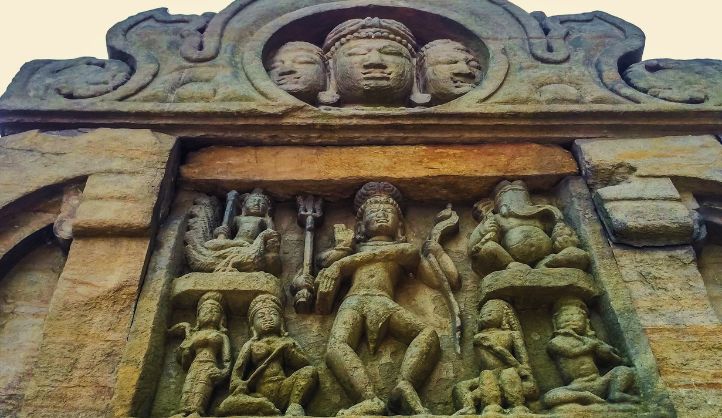🏛️Explore the intricate world of Uttarakhand Stone Carvings: where art, history, and spirituality unite. Discover the rich cultural heritage of this Himalayan region through exquisite sculptures and architectural wonders. 🗿🏔️
In the heart of the majestic Himalayas lies Uttarakhand, a region blessed with not only breathtaking natural beauty but also a rich cultural heritage. Among its many treasures are the exquisite stone carvings that adorn its temples, monuments, and architecture.
In this article, we will delve deep into the world of Uttarakhand stone carvings, exploring their history, significance, and the intricate craftsmanship that goes into creating these timeless masterpieces.
Understanding the Legacy
Historical Significance
Uttarakhand’s stone carvings are steeped in history, dating back to ancient times. These intricate carvings have not only stood the test of time but have also borne witness to the region’s fascinating journey through history. They provide a valuable glimpse into the beliefs, customs, and artistry of the people who once inhabited this land.
Spiritual Connection
The stone carvings in Uttarakhand are not merely artistic expressions; they are deeply intertwined with spirituality. Many of these carvings depict gods, goddesses, and mythological tales, serving as a means of religious expression and devotion. These intricate sculptures often adorn temples and shrines, adding a divine touch to the architectural marvels.
The Art of Stone Carving
Traditional Techniques
The craftsmen of Uttarakhand have passed down the art of stone carving through generations. They employ traditional techniques that involve precision and skill. The use of simple tools combined with intricate designs results in sculptures that are both visually stunning and culturally significant.
Materials Used
One of the key elements that make Uttarakhand stone carvings unique is the choice of materials. The region is rich in various types of stone, each with its own texture and color. Artists select the perfect stone for their creations, ensuring that it complements the design and serves as a lasting testament to their craftsmanship.
Top 10 Historical Temples of Uttarakhand with Amazing Architecture
1. Kedarnath Temple
Nestled amidst the snow-capped peaks of the Garhwal Himalayas, the Kedarnath Temple is an architectural marvel that sits at an astonishing altitude of 3,583 meters above sea level.
Dedicated to Lord Shiva, this ancient shrine not only serves as a spiritual haven but also stands as a testament to human devotion and architectural ingenuity. Its stone architecture, meticulously crafted centuries ago, seamlessly blends with its pristine surroundings, creating a sense of divine unity with nature.
Pilgrims from far and wide undertake a challenging trek to seek blessings at this sacred abode, firmly believing in its power to cleanse their souls and grant them divine favor.
2. Badrinath Temple
Badrinath Temple, another jewel among Uttarakhand’s spiritual treasures, is dedicated to Lord Vishnu. Situated in the quaint town of Badrinath, this temple is the epitome of grandeur and devotion.
Its vibrant colors and intricate sculptures are a testament to the craftsmanship of the artisans who carved it. The temple stands as a vivid reminder of Lord Vishnu’s meditation under a Badri tree, making it a must-visit for devotees and admirers of remarkable architecture alike.
3. Yamunotri Temple
Yamunotri Temple, perched in the heart of the Garhwal Himalayas, is the sacred source of the Yamuna River. This temple, with its unassuming and simplistic design, echoes the tranquility of its surroundings.
The pilgrimage to Yamunotri is not just a physical journey; it’s a spiritual expedition that allows devotees to connect with the source of one of India’s holiest rivers.
4. Gangotri Temple
Gangotri Temple marks the origin of the holy Ganges River, a river deeply revered in Hindu mythology. This divine abode, surrounded by the rugged beauty of the Himalayas, showcases remarkable architecture in pristine white marble.
Its gleaming exterior symbolizes the purity of the Ganges, and a visit here is believed to purify one’s soul, making it a significant pilgrimage site for Hindus.
5. Jageshwar Dham
Jageshwar Dham, nestled amidst dense deodar forests, is a mystical cluster of over 100 temples dedicated to Lord Shiva. These ancient structures boast intricate stone carvings that narrate tales of devotion and spirituality.
The serene ambiance of Jageshwar Dham invites visitors to immerse themselves in the divine presence and explore the profound mysteries of Hinduism.
6. Baleshwar Temple
The Baleshwar Temple in Champawat is a hidden gem that showcases the finest examples of ancient Indian stone architecture. Dedicated to Lord Shiva, this temple’s remarkable sculptures and detailed carvings are a testament to the skill and dedication of the artisans of yesteryears. It stands as a remarkable architectural treasure, waiting to be discovered by enthusiasts and pilgrims alike.
7. Rudranath Temple
Rudranath Temple, nestled deep within the Garhwal Himalayas, is part of the Panch Kedar pilgrimage. This remote temple is not just a religious site but also an architectural marvel hidden amidst the breathtaking Himalayan landscapes. Devotees embark on a challenging trek through dense forests to seek the blessings of Lord Shiva at this pristine temple, where spirituality merges seamlessly with natural beauty.
8. Tungnath Temple
Tungnath Temple proudly holds the title of being the highest Shiva temple in the world, situated at an elevation of 3,680 meters. Its wooden architecture is a remarkable feat, considering the challenging terrain. The temple offers a unique spiritual retreat, where devotees can connect with Lord Shiva while being enveloped by awe-inspiring views of the surrounding peaks. It’s an experience that leaves an indelible mark on one’s soul.
9. Baijnath Temple
Baijnath Temple, located in the scenic Bageshwar district, is another hidden gem dedicated to Lord Shiva. The temple’s ancient design and serene ambiance make it an ideal place for meditation and introspection. Surrounded by lush greenery and the melodious hum of nature, Baijnath Temple beckons seekers of peace and spiritual solace.
10. Patal Bhuvaneshwar Cave Temple
Patal Bhuvaneshwar Cave Temple offers a unique and mystical experience as it is situated underground. This ancient cave temple is home to a spectacular natural limestone rock formation that resembles various deities. It’s not just a place of worship but also a remarkable natural wonder. Exploring the depths of this cave temple is akin to embarking on a journey deep within one’s spiritual consciousness.
Preservation Efforts for Uttarakhand Stone Carvings
Challenges Faced
1. Pollution Threat: Pollution from various sources, including vehicular emissions and industrial activities, poses a significant threat to the stone carvings. Airborne pollutants can erode the intricate details over time.
- Solution: Implement stricter environmental regulations and emission controls in the vicinity of heritage sites. Regular cleaning and protective coatings can also mitigate damage.
2. Weathering Effects: Uttarakhand’s temples endure harsh weather conditions, including heavy snowfall and monsoon rains, which lead to cracks and fractures in the stone carvings due to freeze-thaw cycles.
- Solution: Apply weather-resistant coatings to the carvings, conduct periodic inspections, and undertake necessary repairs to combat the effects of weathering.
3. Neglect and Lack of Awareness: Some temples and carvings suffer from neglect due to limited resources and a lack of awareness about their historical and cultural significance.
- Solution: Launch awareness campaigns to educate local communities and tourists about the importance of preserving these treasures. Encourage community involvement in maintenance efforts.
4. Conservation Techniques: The use of inappropriate or invasive conservation techniques can inadvertently harm the stone carvings during restoration efforts.
- Solution: Employ non-invasive and expert-approved conservation methods to ensure that restoration work enhances rather than damages the carvings.
5. Government Support: Adequate government support and funding are essential for the preservation of these historical sites.
- Solution: Lobby for government recognition of the cultural and historical importance of these temples. Advocate for the establishment of heritage conservation boards and committees to oversee preservation efforts.
Conservation Initiatives
Fortunately, various organizations and government bodies have recognized the need to protect Uttarakhand’s stone carvings. Conservation efforts are underway to restore and maintain these priceless artworks, ensuring that they continue to mesmerize future generations.
Conclusion: Uttarakhand Stone Carvings
Uttarakhand stone carvings stand as a testament to the rich cultural heritage of this Himalayan region. These intricately crafted sculptures and architectural marvels not only showcase the artistic prowess of the people but also reflect their deep spiritual and historical connections. As we look toward the future, it is imperative that we preserve and protect these treasures so that they can continue to tell their stories for generations to come.
FAQs Related to Uttarakhand Stone Carvings
1. What is the significance of stone carvings in Uttarakhand?
Stone carvings in Uttarakhand hold both historical and spiritual significance. They depict the region’s rich history and serve as expressions of devotion.
2. How are Uttarakhand stone carvings made?
These carvings are made using traditional techniques, with craftsmen employing precision and skill to create intricate designs on various types of stone.
3. Where can one find these stone carvings in Uttarakhand?
Uttarakhand stone carvings can be found in temples, palaces, and monuments throughout the region, particularly in places of historical and cultural significance.
4. Are there any ongoing preservation efforts for these carvings?
Yes, several organizations and government bodies are actively involved in conservation initiatives to protect and restore Uttarakhand stone carvings.
5. What is the cultural importance of these stone carvings?
These carvings are not only artistic expressions but also cultural treasures that narrate stories of the region’s history, spirituality, and craftsmanship.





